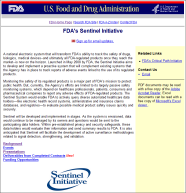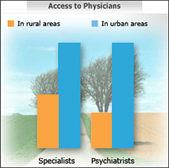News 5/12/09
Providers and patients now have a web site to monitor healthcare safety issues in real time. The FDA launches its new Sentinel Initiative web site that will electronically link data from multiple sources about medication and other FDA-approved products. Users can also sign up for email updates.
A Harvard medical professor co-authors a study on EMR adoption in Massachusetts in 2005 and 2007 and determines that adoption rates jumped from 23 to 35% of practices. There was little change, however, in the use of system features thought to increase patient safety and efficiency, such as reminders for tests.
A former cardiologist pleads guilty to Medicaid fraud and agrees to repay the government more than $1.1 million. Dr. Fabian Aurignac admits he employed unlicensed foreign doctors, billed for consults that never occurred, and offered patients Wal-Mart gift certificates for agreeing to undergo unnecessary procedures. The current charges come a year after the state medical board suspended his license to practice. Once without a license, Dr. Aurignac began to see patients out of an RV parked at flea markets and adult day cares, sometimes bribing the day care operators to gain access to residents.
More doctors, including specialists, are giving up their independent practices to become hospital employees. Financial concerns tend to be the driving force, especially when doctors are compare the costs to purchase costly EMRs versus using a hospital-supplied system.
Here’s proof that physician resistance to technology is not unique to the US. In Japan, an estimated nine percent of physicians claim they would close down their practices rather than adopt online medical billing. Cost is a major concern.
Live in Boston? Then expect wait 63 days to see a family practice physician and up to 70 days to see an OB/GYN. These figures represent the longest average doctor appointment wait time, according to a national survey. Far better to get sick in Miami, when it takes only a week to get in to a family practice office, though a cardiologist could take 29 days. Across five different specialties analyzed in 15 metropolitan areas, the best results were found in Atlanta with an overall average wait time of 11 days. These figures come courtesy of the 2009 Physician Wait Time Survey. Incidentally, the wait times were comparable those found in a similar 2004 study.
This new health care plan sounds a bit like a Sam’s Club for medical care. A group of Detroit-area physicians introduce monthly fee discount cards that offer patients savings on many routine medical services. For $25 to $65 a month, patients are eligible for 40-60% discounts on routine office visits, lab tests, X-rays, EKGs and other non-hospital treatments.
A NY physician, concerned by the number of patients losing their jobs and health insurance, begins offering patients a flat $79 a month fee that covers unlimited preventive visits and onsite medical services such as minor surgery, physical therapy, lab work, and gynecological care. State insurance officials notify him his model is not legal and for sick visits he must charge enough to cover his overhead, which he estimates to be $33. The state insurance officials claim the rules are meant to protect consumers. Hmm … sounds perhaps like the officials are trying to protect the insurance companies, but what do we know?
The Seton Family of Hospitals Community Health Centers (TX) selects billing service provider AMPM to manage its revenue cycle for clinic services.
Despite tough economic times, concierge medical practices are not seeing much decline in business.
The slower economy is blamed for a 12% decrease in cosmetic procedures last year. One plastic surgeon says the business for such procedures for breast augmentation and face lifts has been “flat”. Seems like a curious word to use when discussing breast augmentation surgery.
iMedica appoints Dr. Raymond J. Rabius to its board of directors. Rabius is a strategic advisor to the president of Walgreens’ Health & Wellness Division.
Health insurer Highmark announces it will contribute $1 million to provide training and support doctors who adopt EHRs. The company is paying up to 75% of the cost to buy, install, and implement an EHR.








The article about Pediatric Associates in CA has a nugget with a potentially outsized impact: the implication that VFC vaccines…